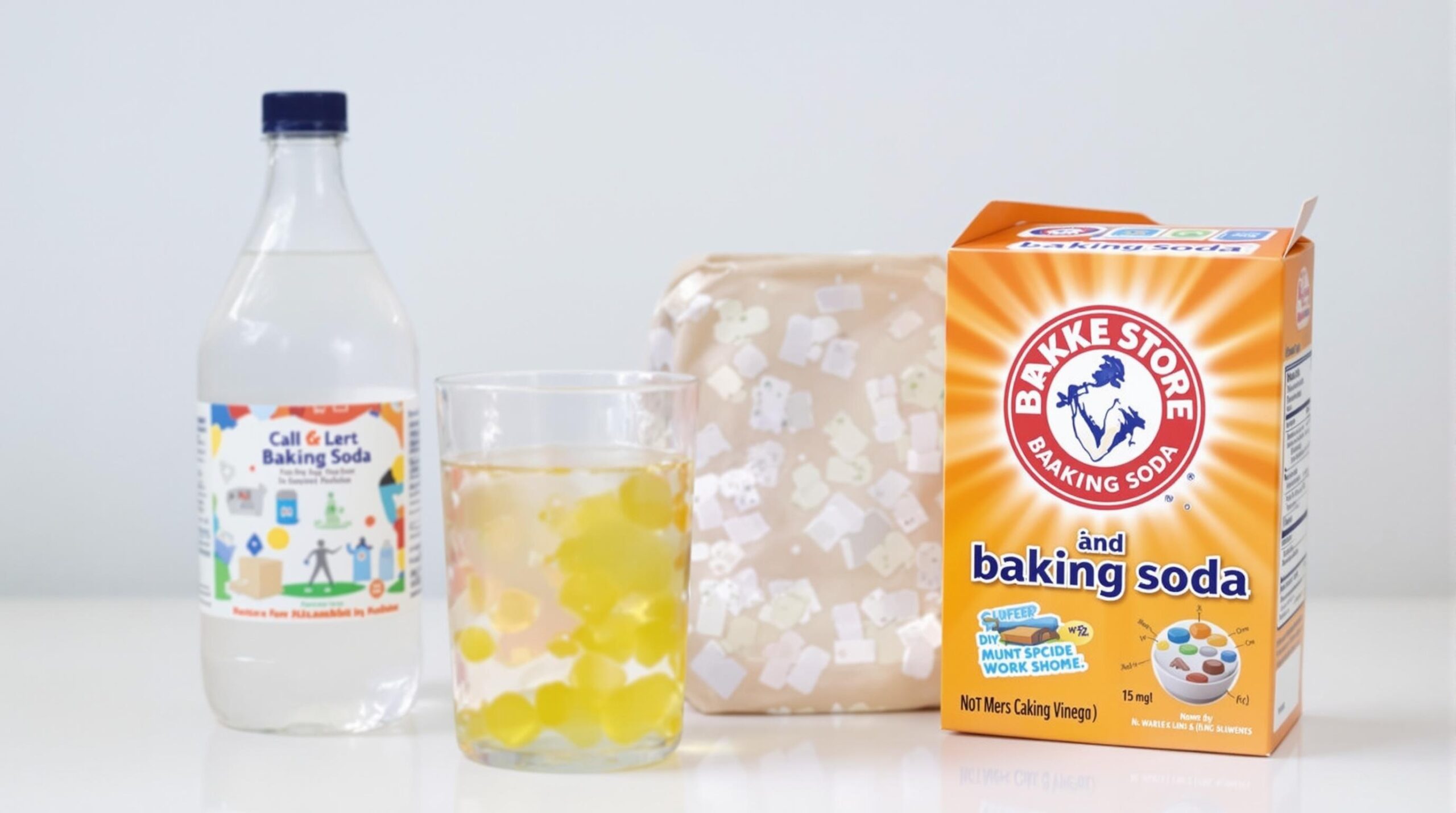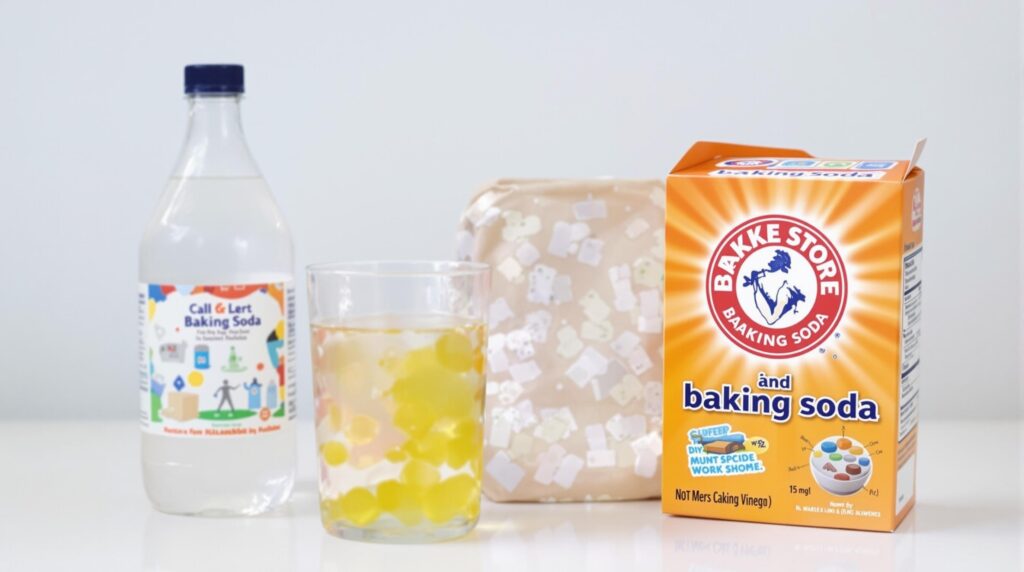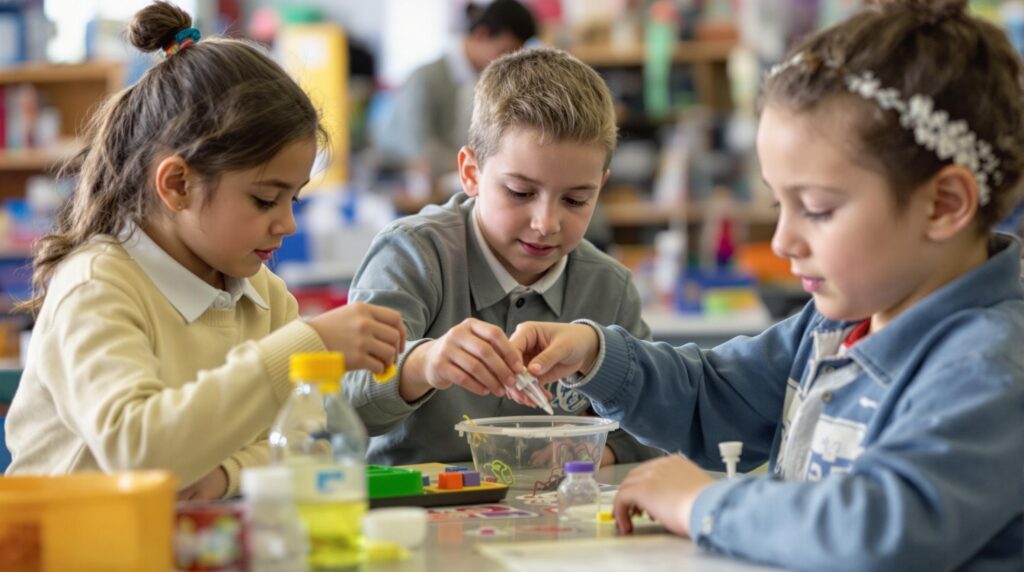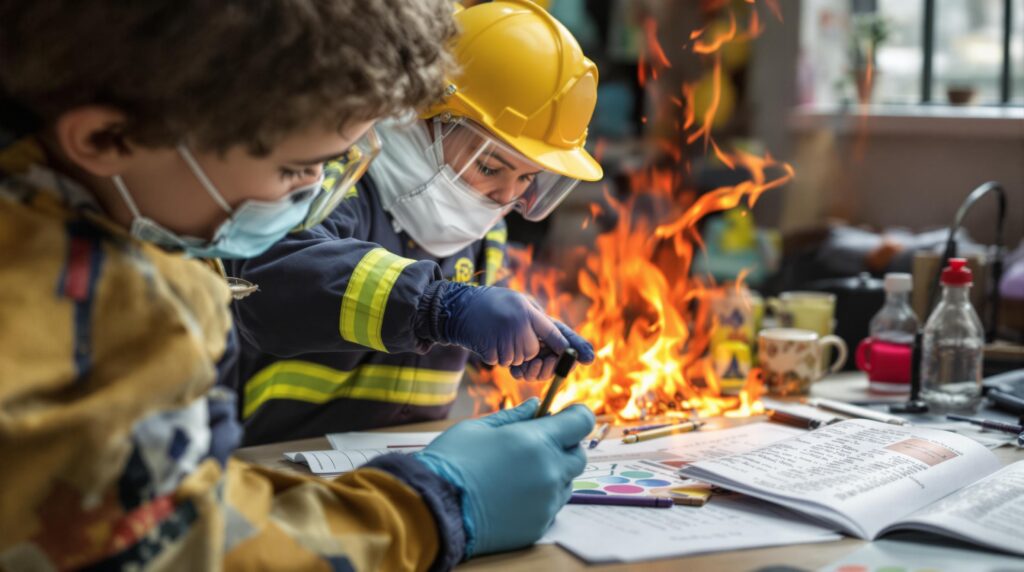Experiments with vinegar and baking soda are a gateway to scientific discovery for children, combining simple household ingredients to create captivating chemical reactions. These easy-to-setup activities not only demonstrate basic principles of chemistry but also encourage kids to ask questions, make predictions, and develop critical thinking skills while having enormous fun.
Key Takeaways
- Vinegar and baking soda experiments teach fundamental chemical reaction principles while being completely safe for children
- These activities require minimal preparation with common household ingredients, making science accessible anywhere
- Hands-on experiments help children develop critical thinking skills and scientific methodology
- The dramatic fizzing reactions naturally spark curiosity and engagement in STEM subjects
- Parents can easily customize experiments for different age groups and learning objectives
The Science Behind the Fizz
When vinegar (an acid) meets baking soda (a base), they create a chemical reaction that produces carbon dioxide gas. This reaction happens immediately, creating the dramatic fizzing and bubbling that kids find so fascinating. The scientific name for this process is an acid-base reaction, specifically between acetic acid in vinegar and sodium bicarbonate in baking soda.
The reaction forms carbonic acid as an intermediate compound, which quickly breaks down into water and carbon dioxide gas. This gas creates the bubbles and foam that make experiments with vinegar and baking soda so visually exciting. I’ve found that explaining this basic chemistry in simple terms helps children understand what they’re seeing and why it happens.

Volcano Eruptions: The Classic Experiment
The baking soda volcano remains the quintessential science experiment for children of all ages. To create this favorite demonstration, you’ll need a model volcano (which can be crafted from clay, paper mache, or even a mound of dirt in the backyard), baking soda, vinegar, and food coloring for dramatic effect.
Place several tablespoons of baking soda inside the volcano’s crater, add a few drops of food coloring, and then pour in about 1/4 cup of vinegar to trigger the eruption. For an extra impressive display, add a squirt of dish soap to create more substantial foam. The resulting “lava flow” provides a perfect opportunity to discuss both chemical reactions and real volcanic processes.
Rocket-Powered Science
Film canister rockets offer an exciting way to demonstrate Newton’s third law of motion using the power of vinegar and baking soda. For this experiment, you’ll need an empty film canister with a snap-on lid (or similar small container), baking soda, vinegar, and tissue paper.
Place a teaspoon of baking soda on a small piece of tissue paper and fold it into a package. Fill the canister about 1/3 full with vinegar, quickly drop in the baking soda packet, snap the lid shut, and place it lid-side down on a flat surface. Then step back! The building pressure inside will eventually pop the canister into the air, sometimes reaching impressive heights. This demonstrates how the gas produced creates pressure that must escape, propelling the rocket upward.
Colorful Chemical Art Projects
Art and science beautifully combine in fizzy paint experiments. Mix baking soda with watercolor paints (or food coloring mixed with water) and have kids create pictures on heavy paper. Once their masterpiece is complete, provide small cups of vinegar and eyedroppers or pipettes. When they drop vinegar onto their baking soda-infused artwork, the chemical reaction creates bubbling, moving color patterns.
This activity stimulates creativity while demonstrating chemical reactions in a visually appealing way. I especially appreciate how this experiment allows children to control variables by changing the amount of vinegar or baking soda, creating different effects in their artwork.
Inflate Balloons Without Blowing
The self-inflating balloon experiment demonstrates gas production in a tangible, visual way. To set up this activity, place about 2 tablespoons of baking soda inside an empty balloon using a funnel. Pour approximately 1/4 cup of vinegar into a small plastic bottle, then carefully stretch the balloon’s opening over the bottle’s mouth, being careful not to dump the baking soda in yet.
When ready for the reaction, lift the balloon to allow the baking soda to fall into the vinegar below. The carbon dioxide gas produced inflates the balloon without any huffing and puffing! This demonstration clearly shows how the gas takes up more space than the original ingredients, a concept that can be difficult for young children to understand without visual aids.
Glowing Lava Lamps
Create homemade lava lamps by filling a clear container about 2/3 full with vegetable oil and adding a layer of colored vinegar (tinted with food coloring). When children drop in baking soda tablets or small amounts of baking soda, the reaction creates bubbles of colored vinegar that rise and fall through the oil, resembling a lava lamp.
For an extra special experience, conduct this experiment in a darkened room with a flashlight pointed at the bottom of the container. The contrast between the oil and colored vinegar creates beautiful visual effects that demonstrate both chemical reactions and concepts of density.
Secret Message Decoders
Invisible ink activities add an element of mystery to science exploration. Have children write secret messages on white paper using baking soda mixed with water (about 1/4 cup baking soda to 1/4 cup water). Once the invisible ink dries, they can reveal the message by gently painting over it with grape juice, red cabbage juice, or a vinegar-red food coloring mixture.
The acid-base reaction causes the baking soda to change color, revealing the hidden message. This experiment combines chemistry with communication, showing how scientific principles can have practical applications beyond the laboratory.
Fizzing Ice Cubes
For a refreshing twist on the classic reaction, freeze colored vinegar in ice cube trays. Once frozen, place these vinegar ice cubes in a baking dish or shallow container and sprinkle baking soda over them. As the ice melts, it releases the vinegar, creating a slow, ongoing reaction with the baking soda.
This experiment adds the dimension of temperature to the chemical reaction, allowing discussions about how heat affects reaction rates. Children can observe how the reaction speeds up as the ice melts faster, connecting concepts of physical and chemical changes.
Exploding Sandwich Bags
For an exciting (though somewhat messy) demonstration of gas pressure, try the exploding bag experiment. Place 1/4 cup of warm water and 1/2 cup of vinegar in a resealable plastic sandwich bag. Put 3 tablespoons of baking soda on a small piece of toilet paper and wrap it up. Quickly seal the bag with the baking soda package inside, shake it to mix the ingredients, and set it down while stepping back.
The bag will inflate rapidly and eventually pop with a satisfying bang! This dramatic demonstration helps children understand how gases expand to fill their containers and what happens when pressure exceeds a container’s capacity.
Foaming Hand Wash
Create a sensory science experience by making foaming hand wash. Mix 2 tablespoons of baking soda with a small amount of water to form a paste. Children can rub this paste on their hands, and then dip their hands into a bowl of vinegar to create a fizzing sensation right on their skin.
This activity engages the sense of touch directly with the chemical reaction while also teaching proper hand washing techniques. The gentle fizzing is perfectly safe and creates a memorable learning experience about chemical reactions.
Tips for Successful Science Explorations
To maximize the educational value of these experiments, I recommend following these simple guidelines:
- Always supervise young children during experiments, especially those involving chemical reactions
- Ask open-ended questions before, during, and after the activity to promote critical thinking
- Encourage children to make predictions and record observations
- Explain the science in age-appropriate language without oversimplifying
- Connect experiments to real-world applications and natural phenomena
By incorporating these strategies, simple experiments with vinegar and baking soda transform from momentary entertainment into valuable learning experiences that build scientific literacy and curiosity. I’ve found that engaging science activities like these often spark a lifelong interest in STEM subjects for many children.
Safety Considerations
While vinegar and baking soda are food-grade ingredients and generally safe, a few precautions ensure a positive experience:
Remind children not to taste the experimental materials, even though they’re technically edible. Vinegar can irritate eyes, so emphasize the importance of keeping hands away from faces during experiments. For younger children, pre-measure ingredients to prevent spills and ensure proper ratios for successful reactions. And always have cleaning supplies handy—these experiments can get messy!
With these simple precautions, experiments with vinegar and baking soda provide a safe introduction to chemistry concepts without requiring specialized equipment or hazardous chemicals.
Extending the Learning
To deepen the educational impact of these activities, encourage children to document their experiments in a science journal. They can draw pictures of their setups, write or dictate their observations, and note any surprises or questions that arise. This practice reinforces scientific methodology and improves communication skills.
For older children, introduce the concept of controlled experiments by changing one variable at a time. For example, they might test whether the reaction changes with different temperatures of vinegar or various amounts of baking soda. These explorations develop critical thinking and analytical skills that extend far beyond chemistry.



